1. Introduction
The Taliban GCPSU (General Command of Police Special Units) are the Taliban’s special police units. It is tasked with confronting domestic threats and combating the Afghan narcotics trade. Equipped with an array of advanced weaponry (inherited from its predecessor under the Islamic Republic of Afghanistan) it has undergone a significant shift in terms of organisation and training. By attempting to mirror police special forces units such as GSG 9, SCO19 and the FBI Hostage Rescue Team, it is the elite of the Taliban police force.
2. Motto, Symbols, Patches and History
2.1 Motto
The GCPSU is a unit of the Ministry of Interior Affairs and as such, its motto is that of its parent organisation:
“Resolute. Ready. Responsive.”
2.2 Symbols
In propaganda photographs released by the Ministry of Interior Affairs, the group consistently uses the flag of the Islamic Emirate of Afghanistan.

The General Command of Police Special Units also consistently releases images which contain religious quotations and phrases which emphasise its mission is:
“implementing the laws of Allah SWT upon the land of Allah”.
2.3 Patches
The GCPSU wear several patches. Operators are commonly seen wearing the Ministry of Interior Affairs emblem.
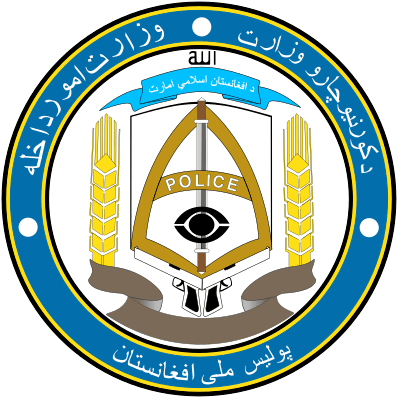
GCPSU operators are also frequently seen wearing the flag of the Islamic Emirate of Afghanistan on their uniforms and helmets.

2.4 History of the GCPSU
The Taliban took over the GCPSU following their victory over the Islamic Republic of Afghanistan in 2021. It was previously the premier elite task force which was mentored by NATO special operations units tasked with countering terrorist threats.
2.4.1 GCPSU under the Islamic Republic of Afghanistan
The GCPSU emerged in 2009, building upon its origins dating back to 2002 when it initially concentrated solely on counternarcotics operations.
Evolving from its inception, it took on a paramilitary character, comprising three dynamic operational units:
- CRU 222
- CF333
- ATF 444
Alongside an intelligence cell and a training directorate. The GCPSU conducted 1,591 operations between May 2015 and November 2017 with only 148 of them requiring NATO assistance. [Source]
On 7 March 2017, ISIS-K attacked the Wazir Akbar Khan Hospital in Kabul. The GCPSU responded to this attack, conducted a breach of the building and cleared all the floors of the terrorist forces. They rescued patients and employees trapped inside the building while taking one casualty. [Source, source]
2.4.2 GCPSU under the Taliban
The 2021 pull-out of NATO forces from Afghanistan resulted in a swift Taliban takeover in virtually every province. As such, the GCPSU and the Ministry of Interior Affairs merged into the re-invigorated Taliban. Consequently, the group is now used by the Taliban in anti-terrorism aimed at countering ISIS-K (Islamic State Khorasan Province), anti-narcotics operations and general security of the Islamic Emirate of Afghanistan.
Following the takeover, many of the original GPCSU operatives fled to Pakistan to avoid retaliation from the Taliban over their collaboration with NATO forces. Around 200 of the operatives faced deportation from Pakistan in 2023 and statements by the soldiers reflected a common sentiment: they had been ‘betrayed by the British government’. [Source]
3. Organisation
3.1 Place within Taliban police forces
The Ministry of Interior Affairs includes the positioning of the Taliban GCPSU within its wider structure.
The Ministry of the Interior police structure:
- Public peace police
- Anti-narcotics police
- Police Special Units (GPCSU)
- Police health services
- Peoples police
- Police officers
- Security police
- Police and fire department
- Crime fighting police
- Traffic police
- Internal security police
- Interpol police
- Border police
[Source]
3.2 Key Figures of the GCPSU
The Ministry of Interior Affairs is the parent organisation of the GPCSU and, as such, its key figures are that of the Ministry:
- Sirajuddin Haqqani: Acting interior minister and the first deputy leader of Afghanistan. He leads the Haqqani network, a semi-autonomous paramilitary arm of the Taliban. Currently wanted by the FBI over his involvement in the attempted assassination of Afghan President Hamid Karzai. [Source, source, source, source]
- Ibrahim Sadr: Senior Taliban official and has served as the acting deputy of the minister of interior affairs since 21 September 2021. Because of disagreements with Taliban leadership, he became the deputy after being appointed as the Taliban military chief commander in 2014. [Source, source, source]
- Maulawi Noor Jalal: He is an Afghan Taliban politician who has served as a deputy of the Minister of Interior Affairs of the Islamic Emirate of Afghanistan since 7 September 2021. Placed on a UN sanctions list in 2001, he ascended to the position of Deputy Minister under Sirajuddin Haqqani. [Source, source, source]
- Mawlawi Mohammad Nabi Omari: He is an Afghan politician who has served as First Deputy Minister for Interior Affairs since 6 October 2022. After spending 12 years in the Guantanamo Bay detention camp, he was transferred to Qatar as part of an exchange involving five others, in return for captured US soldier Bowe Bergdahl. [Source, source]
- Maulvi Badriddin Haqqani: Appointed as the Director of Procurement for the Ministry of the Interior, he assumed the responsibility of ensuring the department remained “free from any kind of corruption, theft, and bribery.” [Source]


3.3 Recruitment
The GPCSU recruits primarily from the wider Afghanistan population and also the police forces of the nation. It may also recruit from previous members of the army and police forces of the Islamic Republic of Afghanistan. This is because of plans that the Taliban had to create a “grand army” which includes officers and troops who served the old regime. [Source]
4. Equipment of the GCPSU
The Taliban has outfitted the GCPSU with an array of high-quality equipment and weaponry. This comes from the fact that a US Defence Department report revealed that over $7.1 billion in US-funded military assets were under the control of the Afghan government before its collapse. A significant portion of this equipment is now presumed to be in the Taliban’s hands. This is evident through photographs released by the group showing the operators of the GCPSU being outfitted with a variety of US weapons. [Source]
4.1 Weapons
The Taliban GCPSU uses a variety of high-quality weaponry which includes, but is not limited to:
- M4 rifles
- M16 rifles
- M24 sniper rifles
- M40 sniper rifles
- M110 SASS
- M2 .50 Caliber Machine guns
- PKM machine guns
- M249 SAW
- AK-47
- AKM
- AK-74
- AK-103
- AK-104
- RPG-7
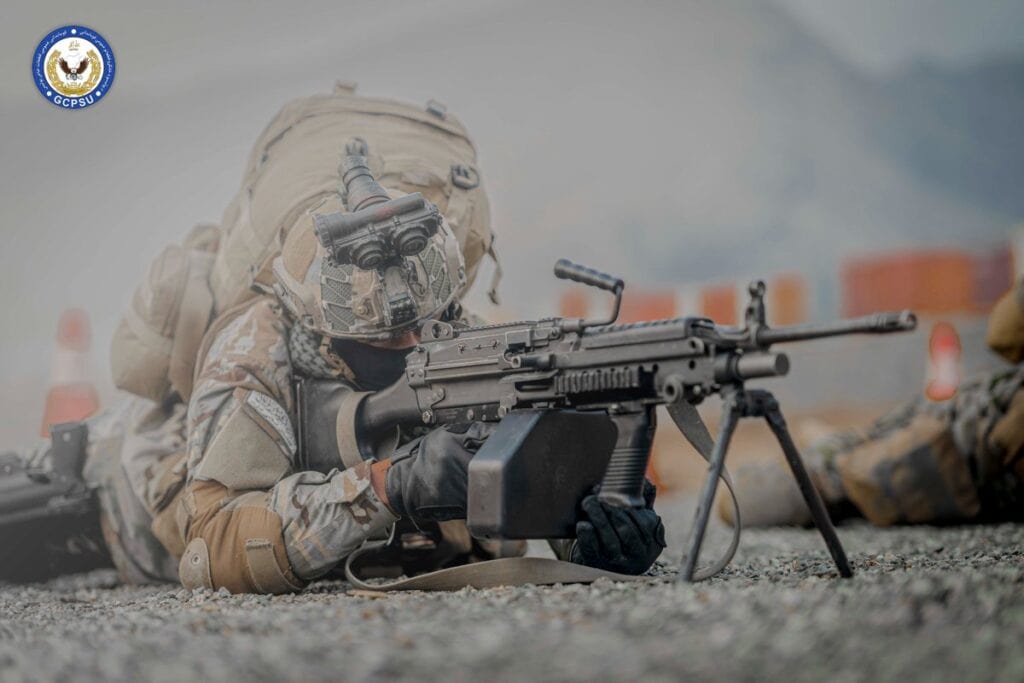
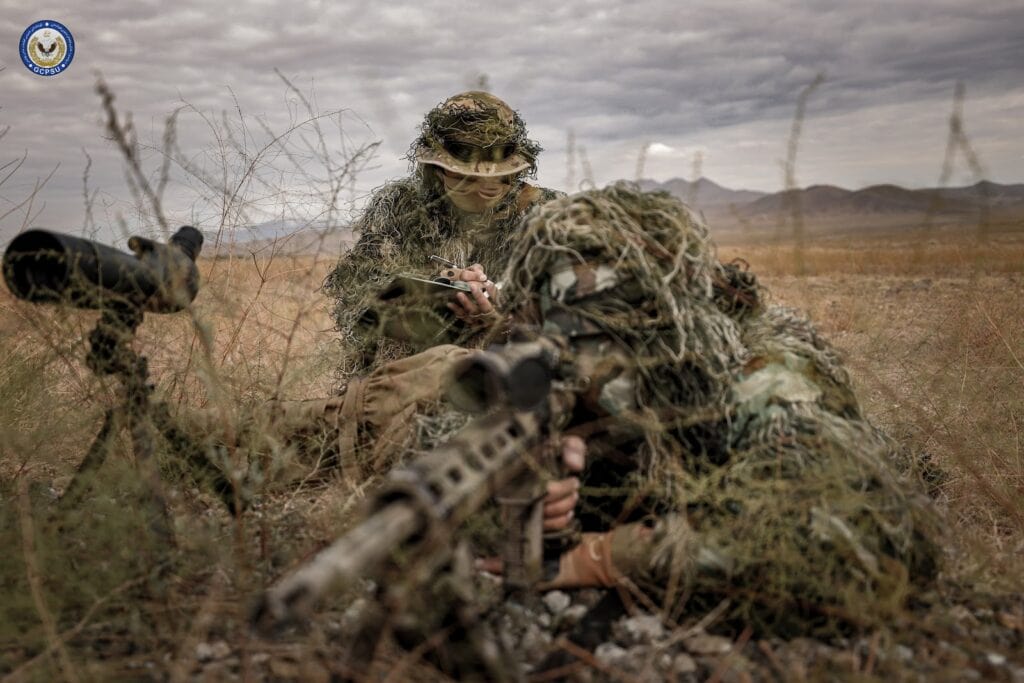

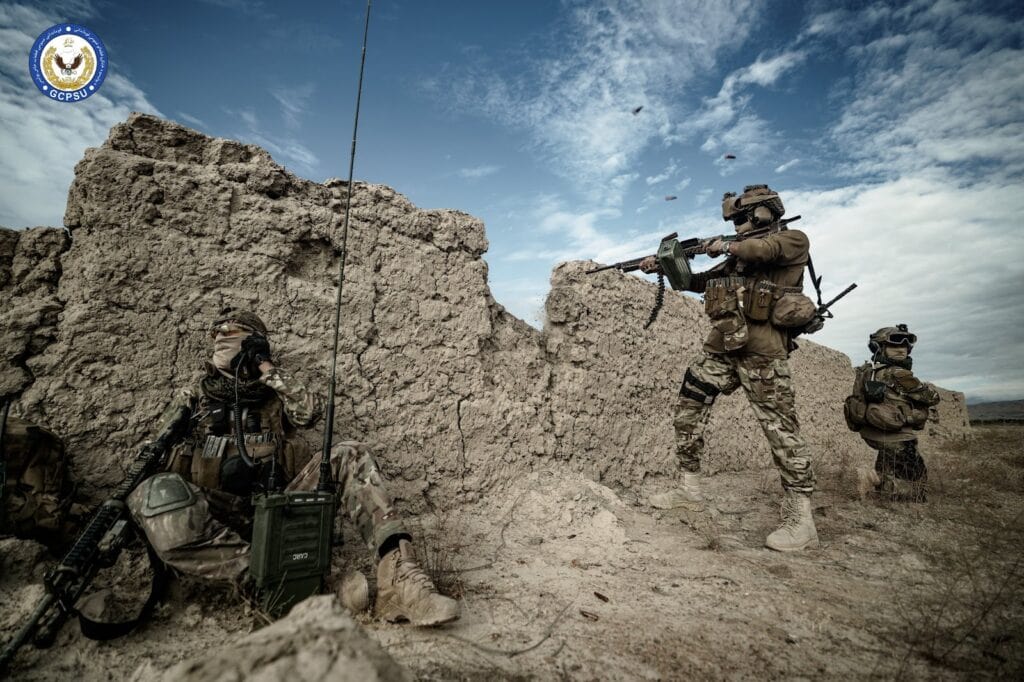
4.2 General Command of Police Special Units Vehicles and aircraft
The GCPSU uses a variety of captured vehicles from both the Afghan National Army and the vehicles left behind by the United States after its withdrawal. This includes but is not limited to:
- Pick up trucks
- Ford Ranger
- Toyota Hilux
- Humvee variants
- M1151
- M1152
- International Maxxpro
- Mil Mi-17 helicopter
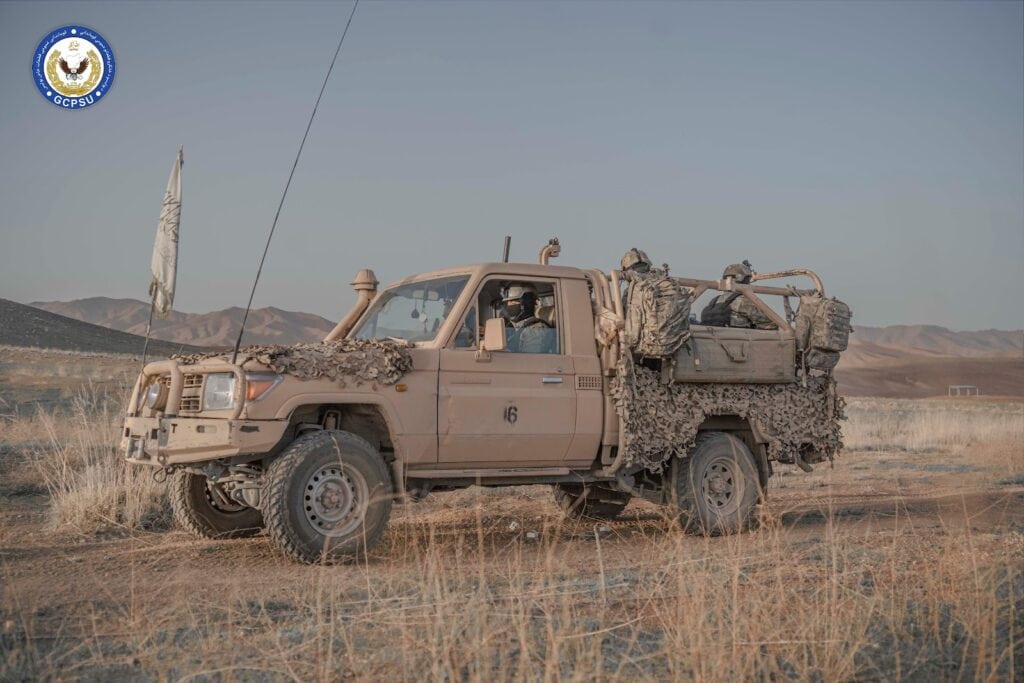


4.3 Optics and attachments
The GCPSU operators outfit their weapons with a variety of optic platforms and attachments. This includes, but is not limited to:
- ACOG 4x
- EOTech holographic sights
- Aimpoint Comp M4
- Variety of telescopic sights
- Laser designators
- Rifle mounted flashlights
- Suppressors
- Foregrips
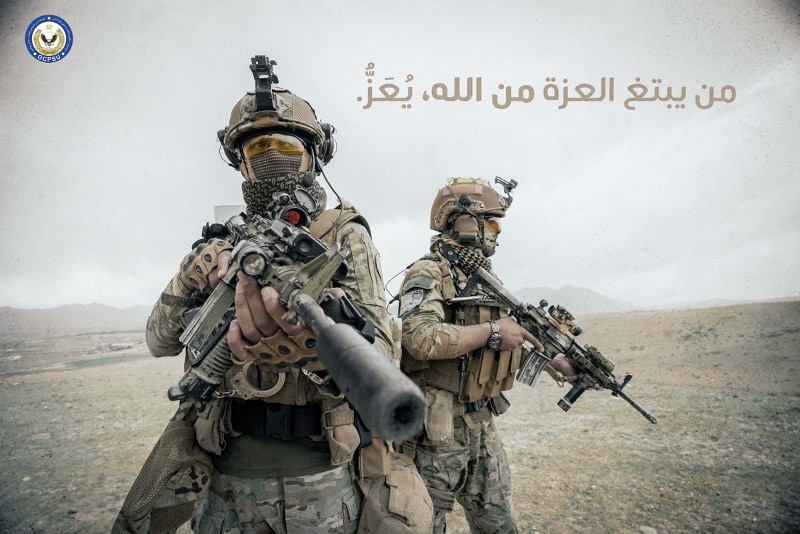
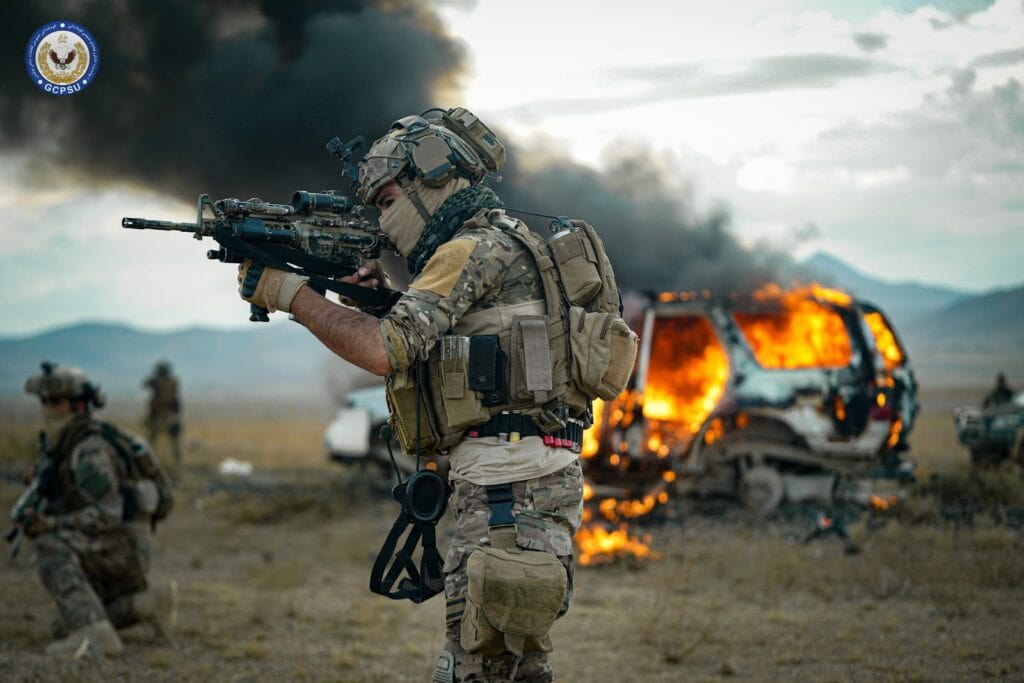

4.4 Armor and Kit
The GCPSU uses a variety of captured American armour and kit left behind after the pullout of US forces in 2021. This includes, but is not limited to:
- Enhanced Combat Helmet
- Ops-Core Future Assault Shell Technology Helmet (FAST)
- Advanced Combat Helmet
- 3M Peltor ComTac III (headset)
- MTV (ballistic vest)
- Mine sweeping equipment
- NVG (night vision goggles)
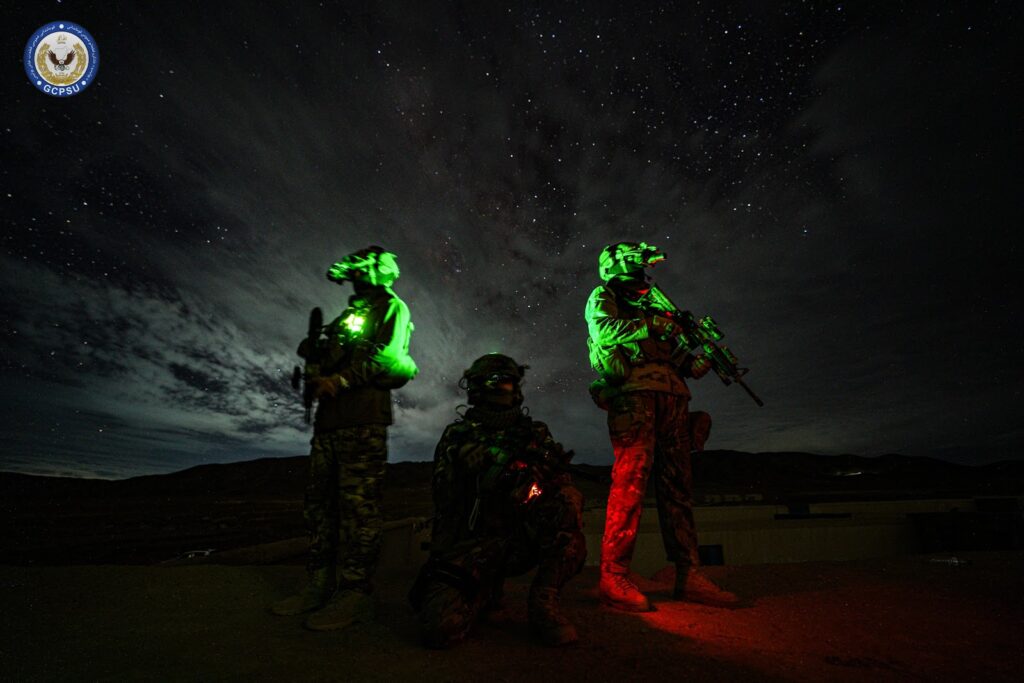
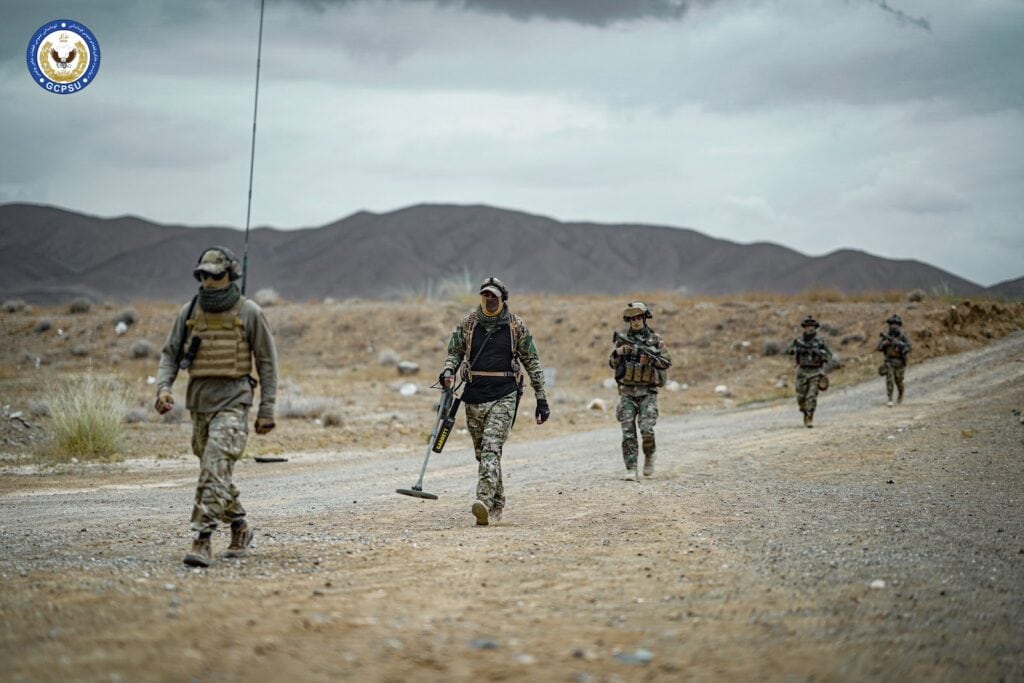
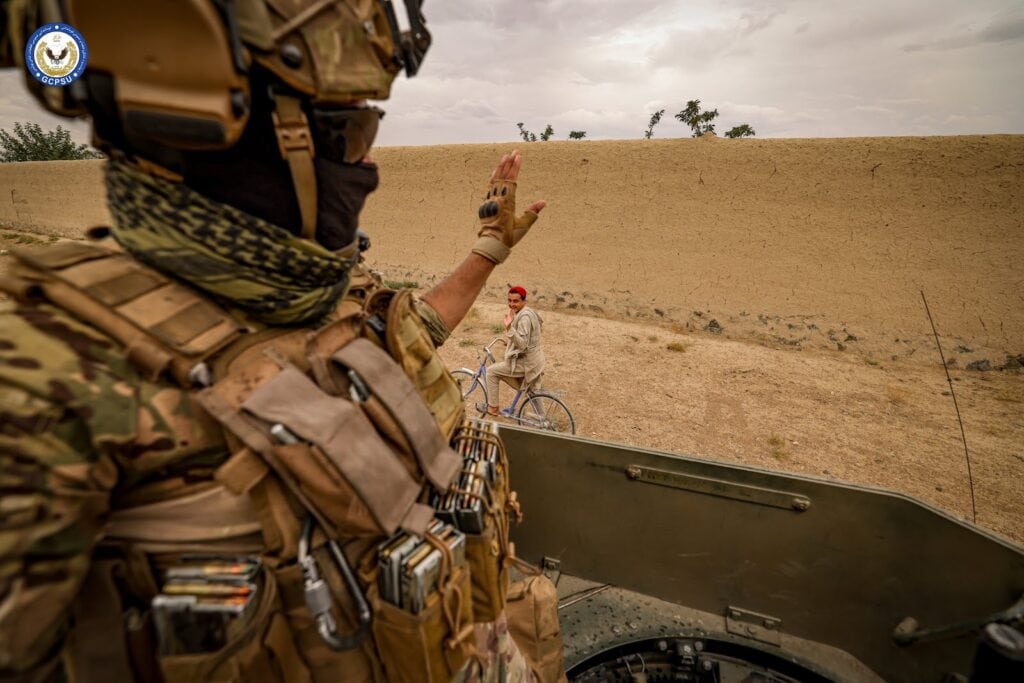
5. Operational Information
The GCPSU, along with its predecessor organization under the Islamic Republic of Afghanistan, actively engages in countering the narcotics trade, conducting hostage rescues, and undertaking general anti-terrorist activities. This has included eliminating smugglers on the Afghanistan-Pakistan border and also seizing and burning poppy and drug crops. [Source, source]
5.1 GCPSU Operations
The Taliban GCPSU has been involved in a variety of operations, which include eliminating smugglers and kidnappers and the seizure of weapons and drugs.
- Ghazni province: Intelligence provided to the GCPSU led to the arrest of one smuggler and large amounts of ammunition and equipment in January 2023. [Source]
- Paktia province: GCPSU units of the Ministry of the Interior arrested four arms smugglers in Paktia province. This led to the seizure of 24 M16 rifles, 2 AK-47s 42,450 rounds of ammunition and several vehicles. [Source]
- Kabul Province: The GCPSU arrested a group of five militants who were planning to attack and assassinate varying members of the government of the Taliban in Afghanistan. [Source]
5.2 Tactics and Training of the GCPSU
The General Command of Police Special Units mirrors many special operations police units. Its tactics involve the quick breaching of buildings through explosive devices being attached to doors and also the rappelling down the side of buildings. Footage published by the group shows operators training in mock-up villages to simulate the entry of GCPSU operators into commonly found dwellings and environments in Afghanistan.
Its training involves a variety of items such as:
- Marksmanship
- Rappeling
- Cold weather training
- Driving
- Physical training
- Recovery under fire
- Explosives training
- Breaching
- Mortar training
- First aid
- Evacuation of casualties

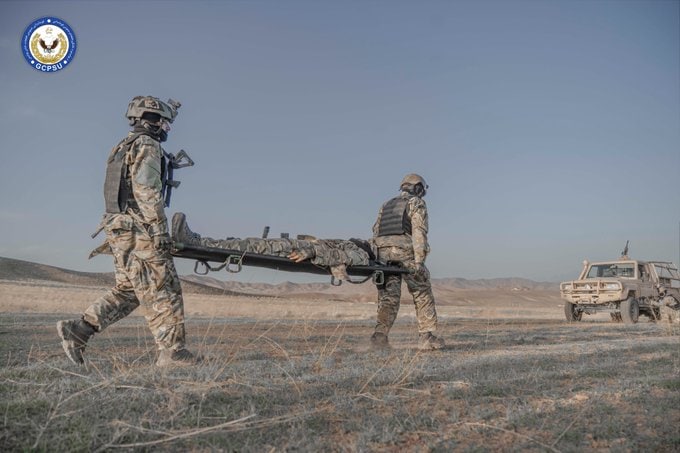
5.3 Personnel size of the GCPSU
Accurate personnel numbers of the GCPSU are unavailable, but images published by the Ministry of the Interior of the GCPSU on its Twitter account show an appearance of large amounts of fighters in formation and also graduating from training.

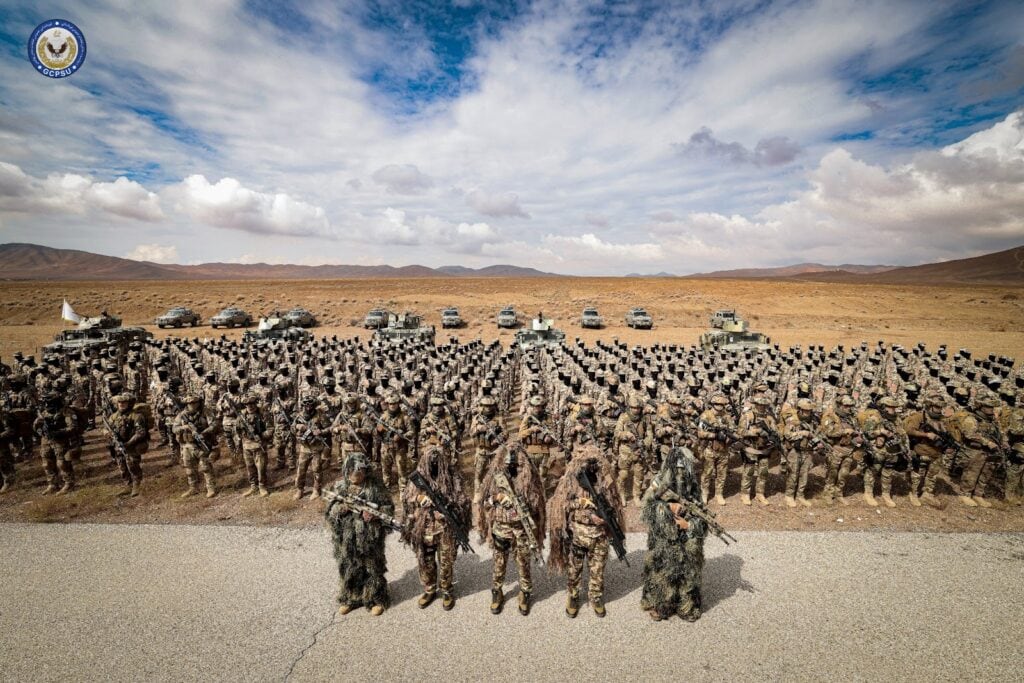
6. Conclusion
The Taliban GCPSU (General Command of Police Special Units) is the Taliban’s elite police special forces unit. Tasked with defending Afghanistan against domestic threats, the Taliban’s GCPSU is armed with a range of advanced weaponry abandoned by the United States after the 2021 withdrawal of US forces. With escalating levels of sophistication and training comparable to that of special forces units regionally and globally, it possesses the potential to evolve into the force necessary for the Taliban regime to uphold control.

